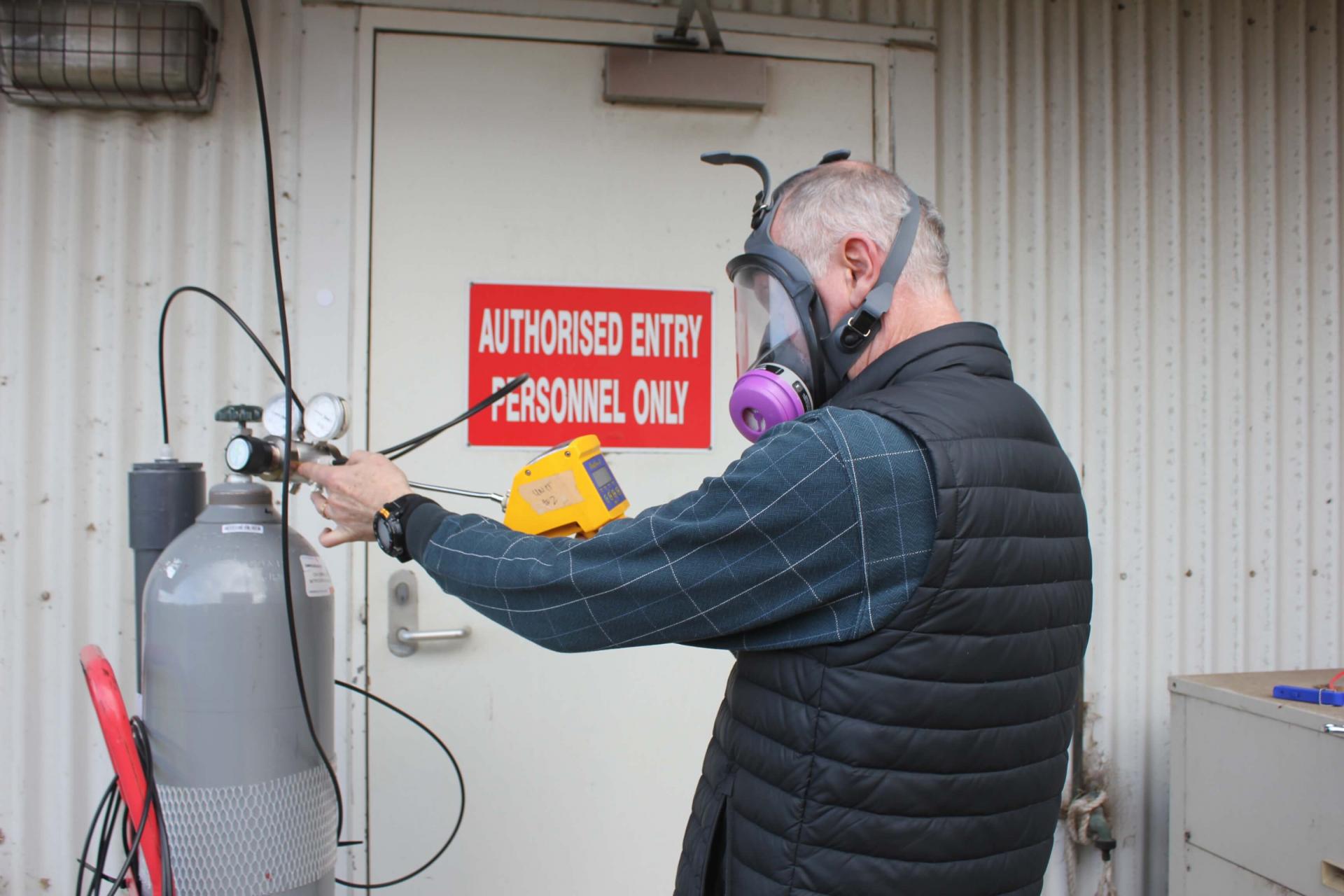Creating safe and healthy work environments through biological safety consulting and services.
Controlled environments - healthcare, research, life science and pharmaceuticals.
New OGTR PC3 Guidelines -
A summary in part


Authors: Brett Cole and Cameron Welch
The new Australian Government Office, Department of Health and Aged Care – Office of Gene Technology Regulator (OGTR) Physical Containment Level 3 Guidelines (OGTR) came into effect on 1st December 2022. The Guidelines cover many aspects of the Licensing of a High Containment Facility Level 3 and serve as great guidance documents for those facilities that are undergoing licensing for the first time, those continuing under an existing license or those changing or modifying their license conditions. The Guidelines have appended guidelines for Animal and Invertebrate facilities.
This summary is compiled by Biosafety International into smaller parts that highlight the conditions of the OGTR PC3 requirements.
The guidelines can be viewed and downloaded here:
https://www.ogtr.gov.au/resources/collections/guidelines-and-checklists-certification-pc3-facilities
Part 1 – Gaseous Decontamination
When to use Gaseous Decontamination:
Knowing when to use Gaseous decontamination methods over other methods (liquid/chemical treatment, physical cleaning etc). The new OGTR PC3 Guidelines offer specific situation when Gaseous decontamination must take place. Under Standard/Guideline terminology “must” or “shall” are considered mandatory requirements.
The OGTR PC3 Guideline states:
Gaseous decontamination of the facility must take place:
- after a spill, or escape of animals or invertebrates infected with viable GMOs outside primary containment (e.g. BSC or IVC), that cannot be decontaminated by another means;
- prior to surrender, expiry or cancellation of certificate;
- prior to re-certification of the facility at a lower containment level;
- prior to suspension or shutdown of the facility where the facility cannot be decontaminated by another means; and
- prior to maintenance work on facility equipment that cannot be decontaminated by another means.
Effectiveness and Validation:
Different gaseous methods have differing attributes and efficacies and validation of the effectiveness of each method is sometimes difficult to interpret. Australian/New Zealand Standards AS/NZS 2243.3 Safety in Laboratories – Microbiological Containment and Safety offers good guidance on the effectiveness of each gaseous decontamination method.
The OGTR PC3 Guidelines state:
“Where GMOs are decontaminated using gaseous treatment, the gaseous agent must be effective in rendering the GMOs non-viable. Whether decontaminating the entire facility, part of the facility or selected equipment, successful gaseous decontamination must be validated by use of appropriate indicators (e.g. spore strip tests) placed throughout the space to be decontaminated. Records of the tests must be kept for 3 years and made available to the Regulator, on request.”
One validation of successful decontamination, the OGTR Guidelines state the following:
“Note: Gaseous decontamination is only considered effective if confirmed by all indicators employed. The type, number and location of indicators must be appropriate for the nature of the gaseous decontamination agent used and the space being decontaminated.”
This is often an ambiguous and confusing area of validation, that is how do we know when it is successful? Each method and service provider will have their own methods of indication of success and it is usually a combination of chemical and biological indicators. It is important not to look at these indicators in isolation rather as a combination approach and also set minimum requirements on gaseous exposure, concentration and correct biological indicators. At the end of the day, gaseous decontamination ustilizes chemical gas to decontaminate so it is important to be able to validate the chemical aspects of the process. This also makes for greater confidence in the method and robust reporting.
Since gaseous decontamination is a biological decontamination, biological indicators (BI) are the ultimate validation method and minimum log reductions, number of strips and locations (sampling design) must be able to validate that the gaseous decontamination method was successful.
Additional Notes:
The OGTR PC3 Guidelines further state:
Gaseous decontamination
100. The entire facility must be able to undergo gaseous decontamination (R2). For facilities that contain multiple work areas, an individual work area may be isolated and decontaminated independently of the rest of the facility.
101. Large items can be removed from the facility via a decontamination chamber where they can be fumigated with a gas such as formaldehyde, vaporous hydrogen peroxide or chlorine dioxide.
Other decontamination methods:
102. If non-standard forms of decontamination (e.g. UV irradiation) are intended to be used in the facility, they must be approved in writing by the Regulator (C63). In this instance, the OGTR should be contacted as early as possible in the planning process to ensure timely advice is provided regarding the additional testing and commissioning data required, and additional requirements or conditions that may apply to the proposed method of decontamination. “
It is therefore important that the Facility Operator or Licensee is aware of the different methods of decontamination and whether it is an improved method by OGTR (and DAFF for Quarantine licensed facilities). AS/NZS 2243.3, OGTR PC3 and DAFF BC2 Guidelines offer good information on the different methods.
Gaseous decontamination can be a daunting process especially for new facilities that may have not undertaken the process before. There is many good documents as mentioned that can assist with this process and selection of gaseous methods. The important thing is to have an agreed sampling plan, validation method for success and that the method is approved by the regulators. Whether this is performed in house by the facility or outsourced to a third-party provider, understanding when and how you will decontaminate, documented evidence of biological efficacy, safety methodology, sampling process, compliance and reporting is key to a success.
© Copyright Biosafety. All Rights Reserved.